Loss of HMAS Canberra I remembered

On 9 August 2021 the crew of HMAS Canberra II remembered the first ship to bear her name during a small ceremony at sea, marking 79 years since the Battle of Savo Island.
CAPTION: The ship’s company of HMAS Canberra commemorates the 79th anniversary of the Battle of Savo Island on the flight deck while at sea in the Western Pacific. Story by Lieutenant Sarah Rohweder. Photo by Leading Seaman Ernesto Sanchez.
Commanding Officer Canberra Captain Jace Hutchison said the Battle of Savo Island formed part of a shared history between Australia and the US.
“It has seen our alliance and friendship strengthen in the face of adversity,” Captain Hutchison said.
“The name Canberra has lived on since World War II, not just in the RAN but also in the United States Navy, which has named two ships after Canberra.
“As Australians, we have been truly honoured by these gestures, and serve with pride in Canberra’s namesake.”
In Australia, a small commemoration was hosted at the HMAS Canberra Memorial on the northern shore of Lake Burley Griffin in Canberra.
It was attended by senior naval personnel, government officials and various military organisation representatives.
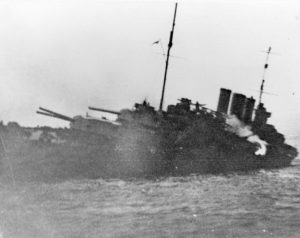
The Battle of Savo Island began with Japanese bombers dropping flares off Savo Island, illuminating the waters and revealing the position of Australian heavy cruiser HMAS Canberra and US cruiser USS Chicago.
Within seconds, Imperial Japanese Navy ships engaged the cruisers, which held the duty of the Allied Southern Screening Force during World War II and were supporting American landings at Guadalcanal and Tulagi.
It was part of networked protection around the American invasion force, which had begun landing on 7 August 1942 – just two days earlier.
Canberra was the lead ship in the Southern Screening Force and, as such, received almost the entirety of the enemy’s focus. The ship was immediately put out of action and left listing to starboard.
Chicago remained operational, but was badly damaged during the barrage.
Knowing they had destroyed the southern patrol’s ability to conduct its duty, the Japanese pushed their offensive campaign around the island, splitting into two columns and approaching the Northern Screening Force at high speed.
Their mission was simple: destroy the screening force and expose the landings.
It was mission success. The Japanese force continued to batter, and in some instances destroy, a number of other Allied naval vessels before withdrawing.
More than 1000 Allied sailors lost their lives and a further 700 were wounded.
Canberra alone lost 84 sailors killed and treated a further 109 wounded in the attack.
With Canberra burning and without power, the Allied Commander Rear Admiral Richmond Turner ordered the ship be abandoned and scuttled by friendly fire.
CAPTION: HMAS Canberra passing under the Sydney Harbour Bridge, which was still under construction, in October 1930. RAN file photo.
.
.

.
.

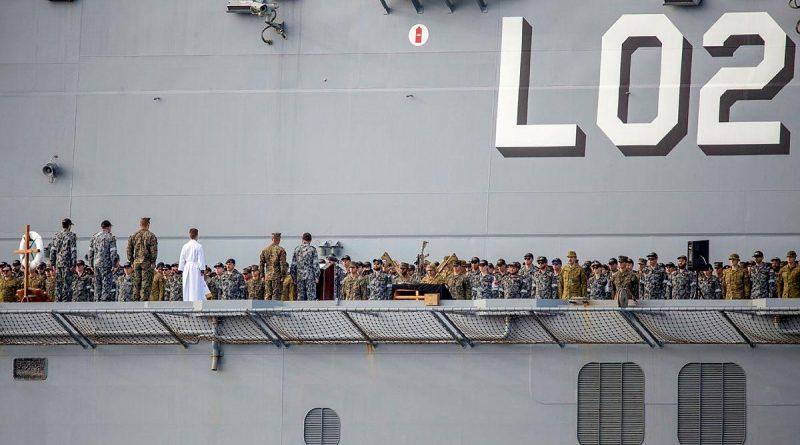

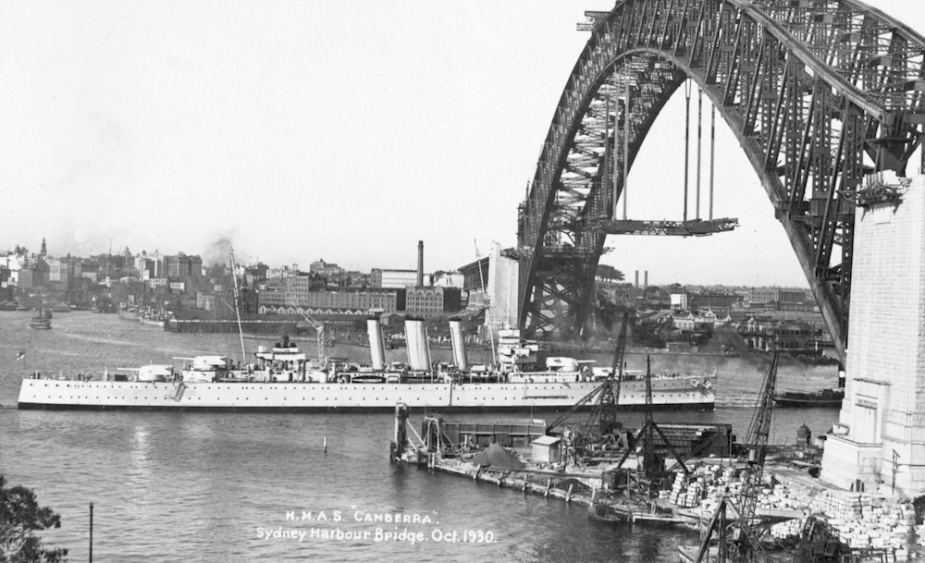
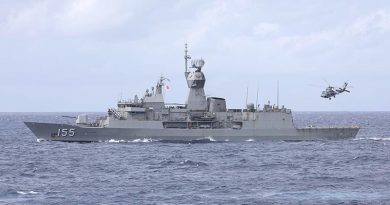
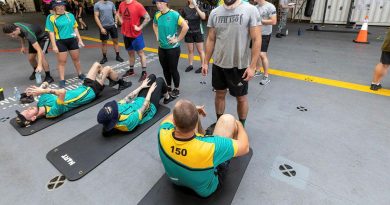
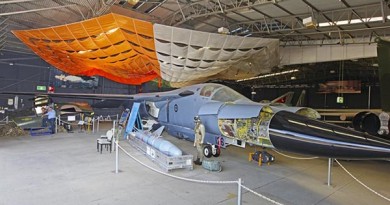
CDRE Bruce Loxton’s 1997 book, THE SHAME OF SAVO is an excellent recounting of the whole drama. He was a Midshipman onboard during the battle.
Hi Guys,
There is a small error in this article. The Current HMAS Canberra is HMAS Canberra III. HMAS Canberra II was an Adelaide Class Frigate that decommissioned in 2005.
Kind Regards
Andrew McCully
A good issue,
Thank you.
A graphic account of the sinking of HMAS Canberra was published by my close friend LCDR Mac Gregory RAN Rtd who was officer of the watch when Canberra was first hit .I commend it to you. It is included in his website Mac’s Web log Ahoy.
Yours Aye! Rex Williams